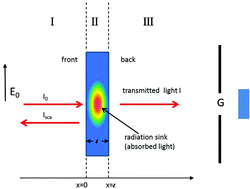Fringes in FTIR spectroscopy revisited: understanding and modelling fringes in infrared spectroscopy of thin films
Abstract
The appearance of fringes in the infrared spectroscopy of thin films seriously hinders the interpretation of chemical bands because fringes change the relative peak heights of chemical spectral bands. Thus, for the correct interpretation of chemical absorption bands, physical properties need to be separated from chemical characteristics. In the paper at hand we revisit the theory of the scattering of infrared radiation at thin absorbing films. Although, in general, scattering and absorption are connected by a complex refractive index, we show that for the scattering of infrared radiation at thin biological films, fringes and chemical absorbance can in good approximation be treated as additive. We further introduce a model-based pre-processing technique for separating fringes from chemical absorbance by extended multiplicative signal correction (EMSC). The technique is validated by simulated and experimental FTIR spectra. It is further shown that EMSC, as opposed to other suggested filtering methods for the removal of fringes, does not remove information related to chemical absorption.



 Please wait while we load your content...
Please wait while we load your content...